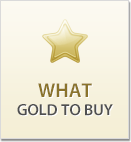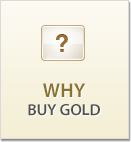Investments in physical gold do not have to be in the form of coins or bars. Gold is always a beautiful investment, particularly when it comes in the form of jewelry.
Why Invest in Jewelry?
There are several benefits to investing in gold jewelry. First, you can use it and enjoy it while owning it. For many investors, this is preferable to buying gold bars that they feel must be stored away, never to be shown off. Gold jewelry can hold not only monetary value, but also artistic or sentimental value. It is also easier to transport; you can wear your wealth while traveling, making it an extremely portable form of gold investment.
Determining the gold content in a particular piece of jewelry is a little more complicated than determining the weight of a solid piece of gold, such as a coin or bar. This is because most jewelry is not pure gold. In some cases, the jewelry is only plated in gold; gold plated jewelry contains another metal underneath a thin layer of gold. If the gold is not marked with a karat indicating gold content, there is a possibility that it is not real gold, but rather a gold-colored base metal.
Jewelry Purity
The purity of gold jewelry is noted in karats. The higher the karat number, the more gold it contains. 24 karat is 99.99% pure gold. 18 karat gold, meanwhile, is 18/24ths (75 percent) gold. Many jewelry pieces are 10 (41.7%), 12 (50%), or 14 (58.3%) karat gold. Such pieces mix relatively soft gold with a harder metal.
The benefit of the lower gold content is a piece of jewelry that is better able to withstand wear. While this is preferable for jewelry, it is less desirable as a precious metal investment. Investment-grade jewelry contains a high percentage of gold, meaning it has a high karat.
Brand Power
Some gold jewelry investors prefer basic pieces which are valued primarily on the amount of gold they contain. Others purchase gold jewelry from well-known designers like Tiffany or Cartier, or antique gold jewelry, which carries additional value based on their craftsmanship, design, or age. When buying gold jewelry, always look for small markings, often on the clasp or backside of the piece, which tell you the karat, and often the designer or maker of the piece.
As a gold investor, it makes no sense to walk into a jeweler’s retail store and pay full price for a piece of jewelry. Instead, you should be looking for wholesale or secondary market sources of gold. Some investors have had good luck at pawn shops, for example. If you do plan to purchase jewelry for its gold content, a small pocket scale can help you determine the weight of the jewelry, critical for computing its gold content.
Pricing
When buying gold jewelry, be aware that it is more difficult to find gold jewelry under spot than gold coins or bullion because of the added work required to turn gold into beautiful jewelry. Still, it is possible to find deals under the current spot price of gold. This is particularly true when purchasing tangled chains, broken rings, and other pieces of unwearable gold jewelry, commonly referred to as “scrap gold.”
If you invest in gold jewelry, be aware that it is more susceptible to loss or theft than other forms of gold stored safely out of sight. When at home, it should be stored in a safe, just as with other forms of physical gold. If you have a significant collection of gold jewelry, it should be added to your insurance policy for protection in case of theft, fire, or other catastrophic events.





